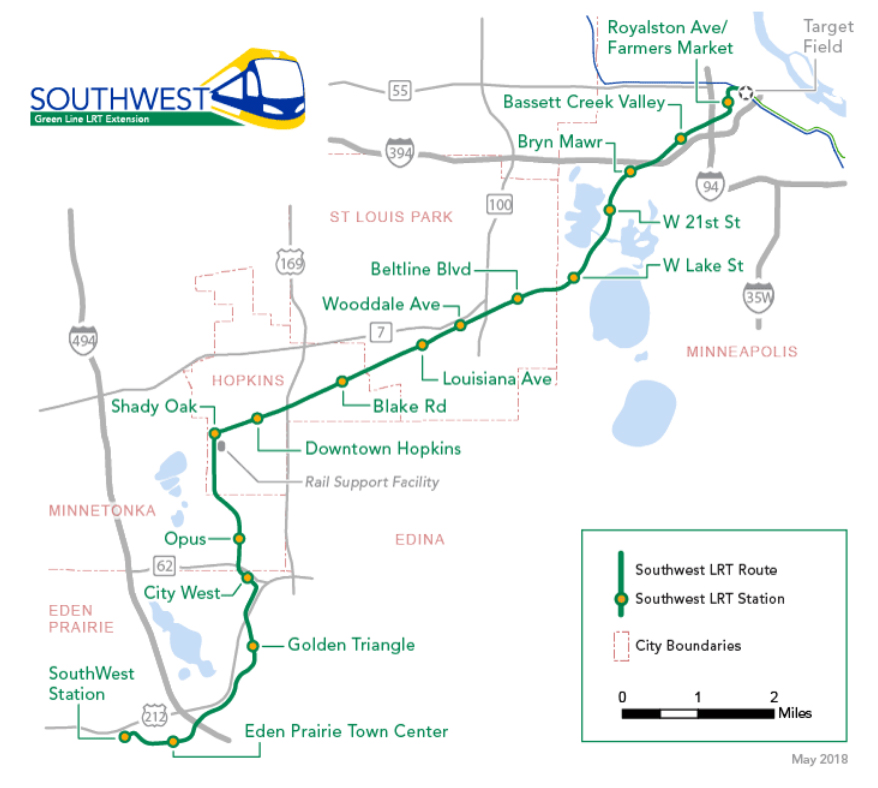
ST. PAUL, Minn. — The Twin Cities-area Metropolitan Council has approved an additional $200 million in funding from Hennepin County for the Southwest light rail project, which will extend the existing Green Line to Eden Prairie, Minn.
The Minneapolis Star Tribune reports the additional construction funding increases Hennepin County’s share of the project to $878 million. It comes as a $204 million contingency fund has dwindled to $51 million.
The $2 billion project has run into a number of unexpected costs, particularly because a portion will share a narrow corridor with BNSF Railway [see “Third Twin Cities light rail line approved …,” Trains News Wire, Nov. 15, 2018]. As of earlier this year, the cost of a wall separating the light rail and BNSF tracks had increased by 350% [see “Digest: New MBTA subway cars have derailed six times …,” News Wire, March 24, 2021].
The 14.5-mile, 16-station extension is the most expensive public works project in Minnesota history, now estimated to cost $2 billion.






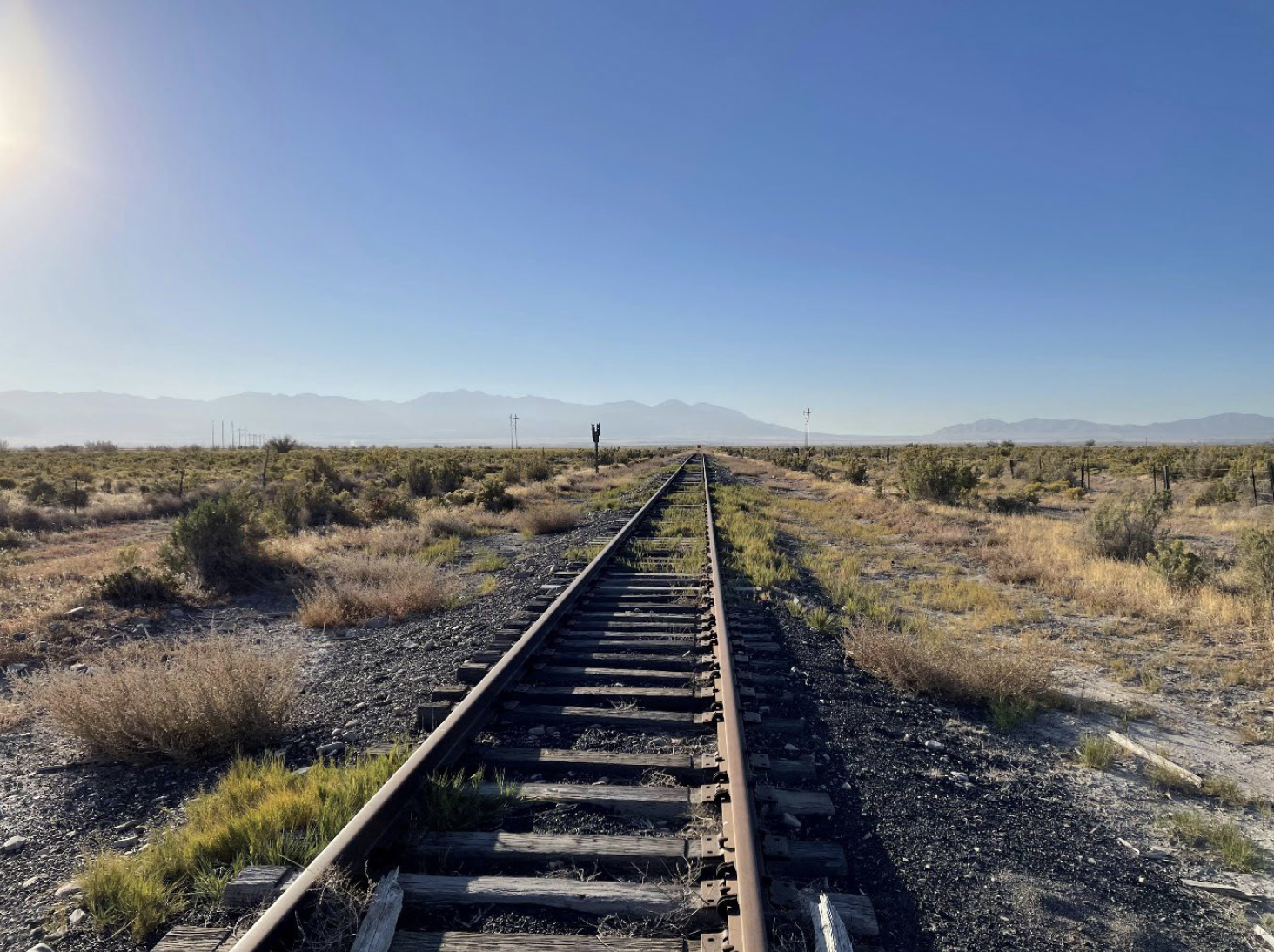
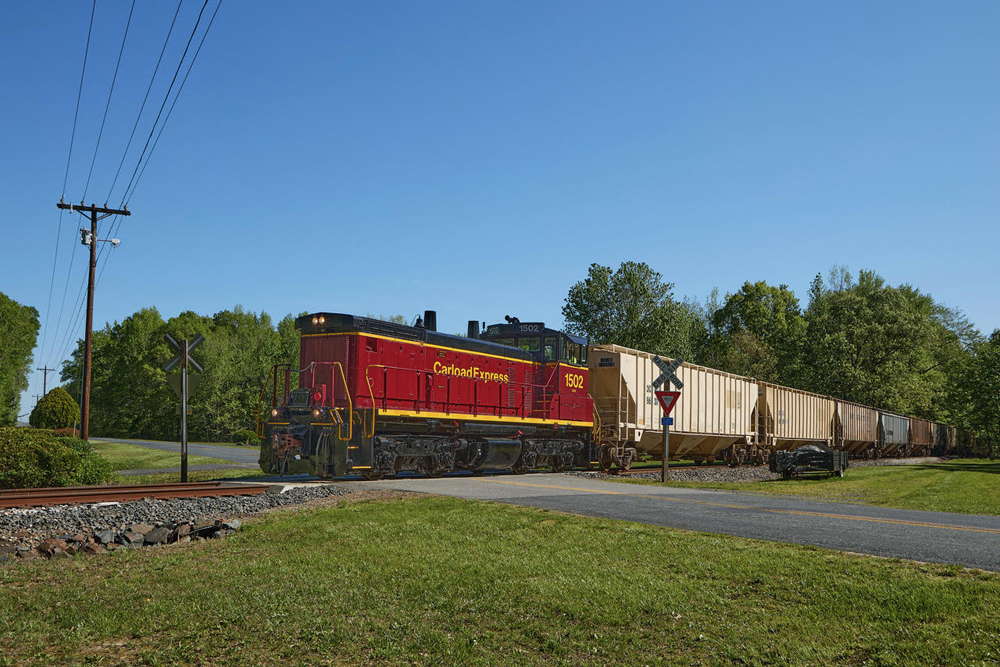
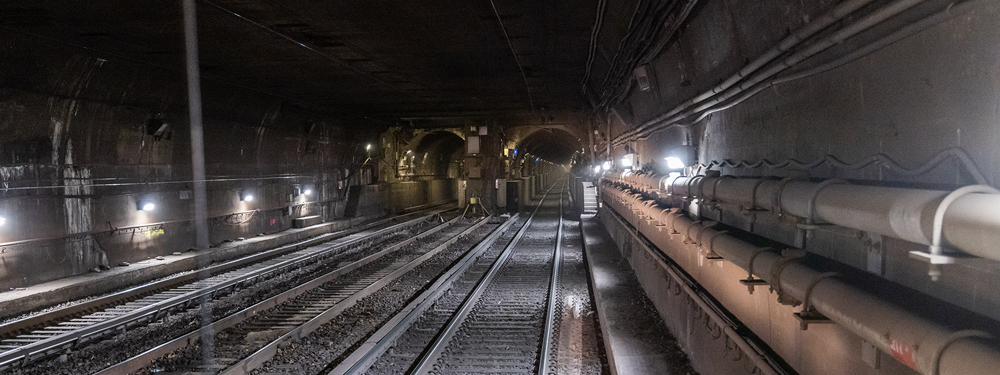
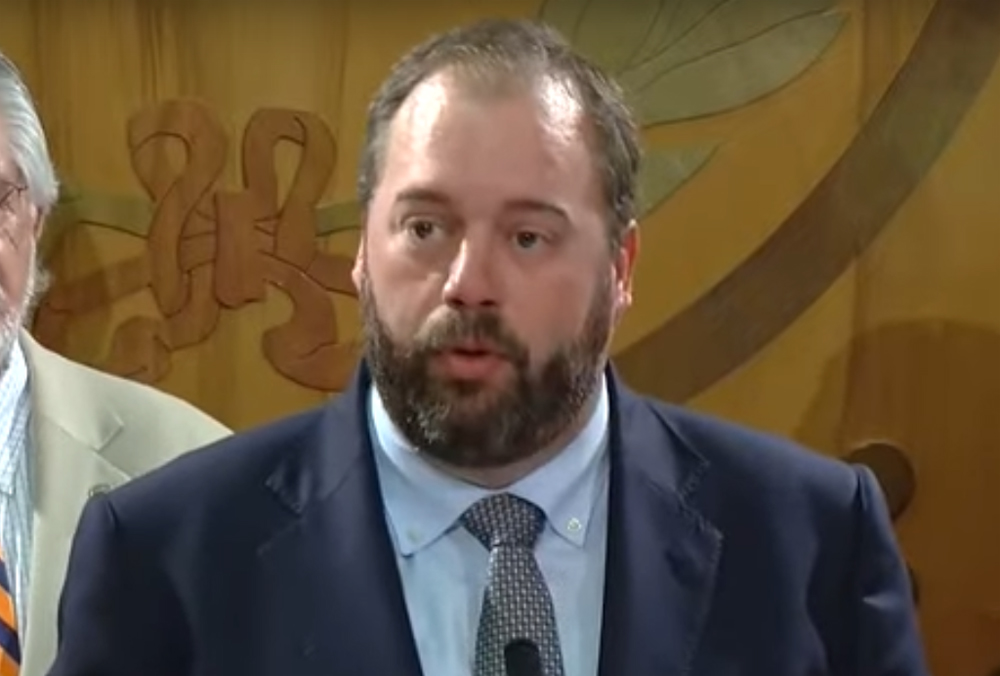




The new work from home environment that is taking hold will result in less highway commuter traffic yet they turn a blind eye to having second thoughts about additional highways or highway expansions only the reduced ridership some transit may experience and the need to reduce that future funding. We have reached the point where the roadways have been overbuilt much as the RR’s over extended in the early 1900’s. The “Boomers” lifestyle does not fit that of the X or the Z generations.
Galen – In this century highways are rebuilt because they are in bad shape, unsafe or too expensive to maintain. Generally not for added capacity. Though added capacity may be a bonus as traffic may flow smoother.
Can one make a guess as to how much over the $2 billion dollar figure this project will cost before it is completed?
Having lived in the Twin Cities for 18-1/2 years, I know the other two light rail lines were used a lot when I was there. Hopefully, this will be too. This line serves a more affluent area of The Cities.
I’m neither for nor against this project as I have no knowledge of it. I’d just do this: ask how many people will ride it and how much diversion from the road system. Even at today’s prices $2 B’s buys a lot of highway which will carry a lot of people and a lot of freight.
As I said I don’t know the territory. Many suburban rail projects spend a whole lot of money (and a whole lot of acreage) on park-rides or parking garages which have their own set of environmental stresses such as traffic congestion, fuel usage and auto emissions.
$2 Billion won’t by you much freeway today, not in todays dollars besides that freeways are antiquated technology…you have to disincentive people from driving everywhere, that’s the whole purpose of not building more freeways, besides the fact that all that concrete absorbs the suns heat into the ground, thereby increasing ground heat(scientifically proven, just as painting said concrete with special white paint that reflects the sun cools the ground, Australia is the proving ground). The problem here is BNSF insisting on a wall separating the light rail line from their line…if they want a wall between the two, then pay for it yourself. There’s absolutely no reason a light rail line and a freight main line can’t share the same right of way.
GERALD – No argument. You have your facts. The environmental impact of freeways is enormous. The problem with freeways is of course that they enable long commutes. If the typical ride on Milwaukee’s toy trolley is a few blocks and if the typical ride on Milwaukee County transit buses is a few miles, freeways enable commutes of 15, 25, 35 miles one way.
After a lifetime reading about transportation, and part of that lifetime working in transportation, there’s a very simple algorithm. The environmental impact varies somewhat by mode but on the whole is the product of bodies moved multiplied by the distance moved, with adders for crew positioning, deadhead moves, and facilities to switch between modes. Such as those park-rides or parking garages at suburban rail or bus stations. (We won’t even get into airports ….. oh my God … talk about environmental impact …. ).
Here’s what I noticed on my last trip:- the parking garages at O’Hare Airport and Logan Airport, and the sizable parking garages at most or probably all stations on the MBTA Red Line South Shore extension (North Quincy, Wollaston, probably Quincy Center, Quincy Adams, Braintree). And that these garages have all fallen into shambles and have been rebuilt or are in the process of rebuild. That’s a lot of concrete. a lot of money, and a lot of energy.
Yes I took the “T” while in Quincy, as well as Logan Airport to Quincy round trip. (I chose the hotel because it’s adjacent to North Quincy “T”.) I also was driven a lot all around Norfolk County by friend and family. All told, more car than “T”.